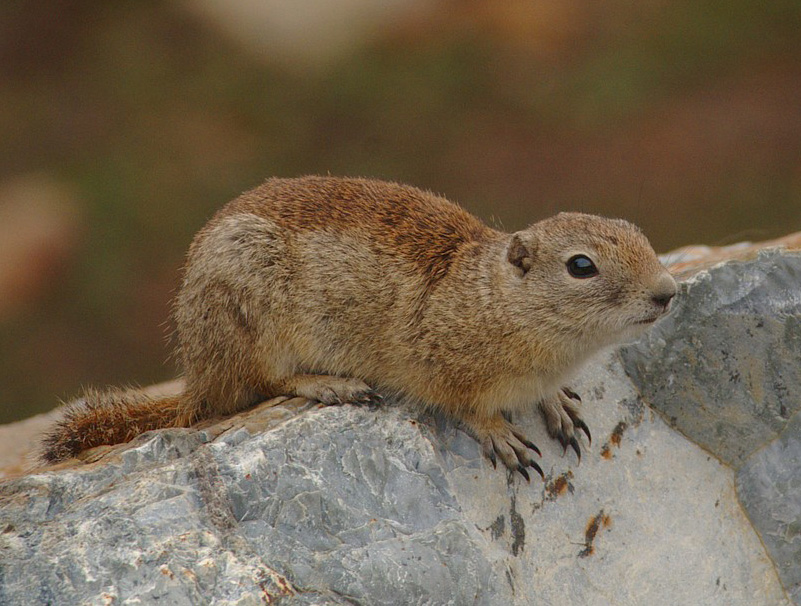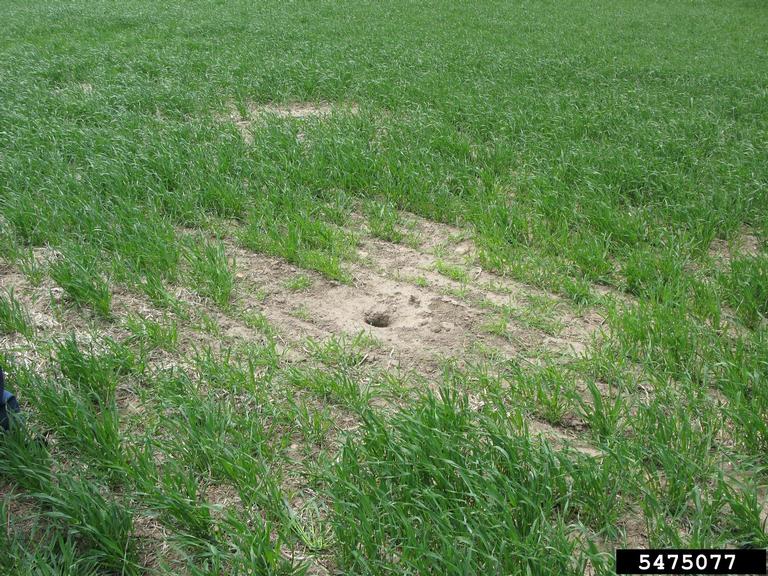Ground Squirrels
Ictidomys; Urocitellus; Spermophilus
Identification
- bodies up to 11 inches long
- tails 2 – 9 inches long and less fluffy than a tree squirrel’s
- brownish-gray fur
- burrow openings about 4 inches in diameter
Nesting Habits
- live in colonies and build underground burrow systems
- populations range from 2 to 20 squirrels per acre
- active during the day
- hibernate during cold winter months
- burrows 5 to 30 or more feet long; 2 to 6 feet below soil surface; no soil plugs
- more than one squirrel can live in a burrow
Diet
- grasses, alfalfa, grains, ornamental plants, seeds and nuts
Significance
- burrowing activity can destroy lawns and other vegetation, collapse ditch banks and undermine building foundations
- carry a wide range of diseases
- strip bark from young trees
IPM Recommendations
- If populations are small, use box traps, tunnel traps or Conibear traps when squirrels are active (February - October).
- Periodically monitor for signs of infestation, such as new burrows, to manage before the population becomes too large.
- Pre-bait (bait traps without setting them) for a few days before setting traps.
- Bait with anticoagulants or zinc phosphide. Use bait boxes in sensitive areas.
- Remove brush piles and debris.




